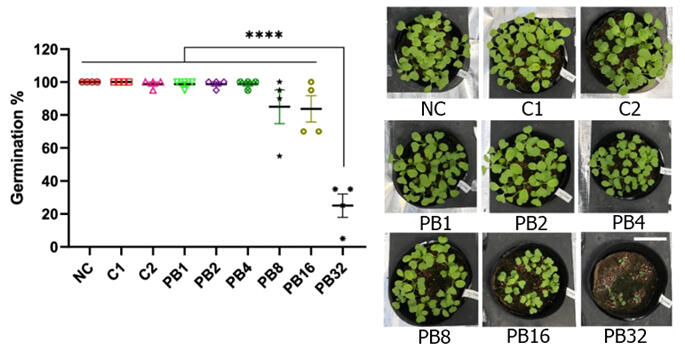Current agriculture relies heavily on inorganic fertilizers to produce large quantities of crops. Moderate use of fertilizers is not harmful. However, excessive use causes excess inorganic nitrogen to spill into the environment. Moreover, excess nitrogen in soil contributes to carbon emissions from the agricultural sector because it is converted to dinitrogen monoxide, a greenhouse gas. The use of organic fertilizers, such as compost, contributes to improving soil conditions. However, a large amount of fertilizer is required to improve soil conditions because typical organic fertilizers have low nitrogen content. This leads to other concerns, such as increased soil salinity. This has resulted in a need to develop new nitrogen fertilizers with low environmental impact for sustainable agriculture.
To address this issue, a research group led by Professor/Team Leader Keiji Numata of the Graduate School of Engineering at Kyoto University/RIKEN Center for Sustainable Resource Science has focused on a marine purple non-sulfur photosynthetic bacterium. This bacterium can fix nitrogen and carbon dioxide (CO2), and the lysed and dried bacterial biomass prepared from the purple non-sulfur photosynthetic bacterium had a nitrogen content of 11% by weight. In studies growing Japanese mustard spinach (komatsuna, Brassica rapa var. perviridis), the bacterial biomass from the purple non-sulfur photosynthetic bacterium could be applied four times more than the amount of inorganic fertilizer without adverse effects on germination or growth. Furthermore, the research team analyzed the correlation between the amount of nitrogen found in komatsuna and the amount of nitrogen added to the soil. They found that komatsuna took up nitrogen from the bacterial biomass prepared from the purple non-sulfur photosynthetic bacterium under low and high temperatures.
The results of this study demonstrate the potential of the purple non-sulfur photosynthetic bacterium to be used as a source of nitrogen fertilizers. Moving forward, the research team will characterize the soil fertilized with this bacterial biomass from the purple non-sulfur photosynthetic bacterium to determine its suitability and economic viability as a novel fertilizer.
Effects of biomass fertilizer on germination and growth of komatsuna





